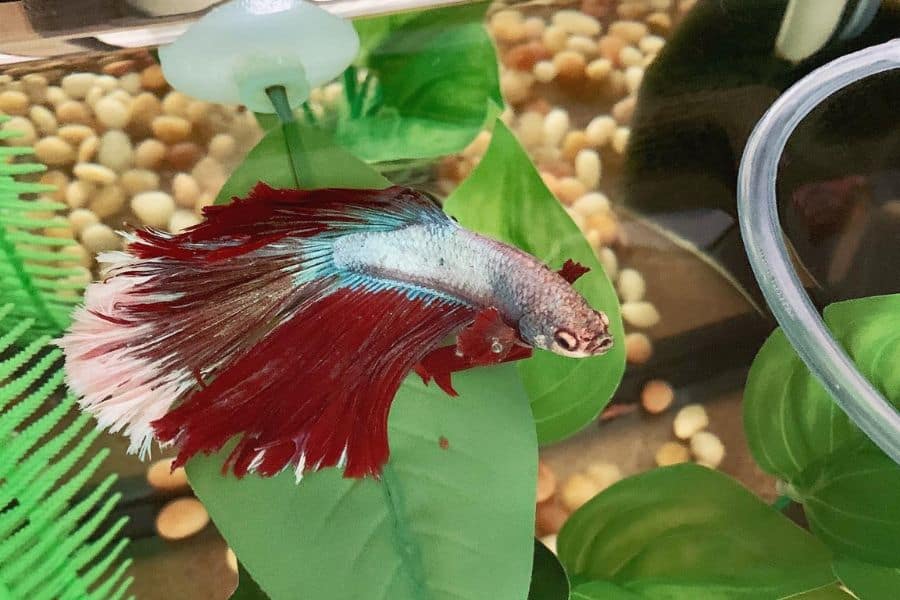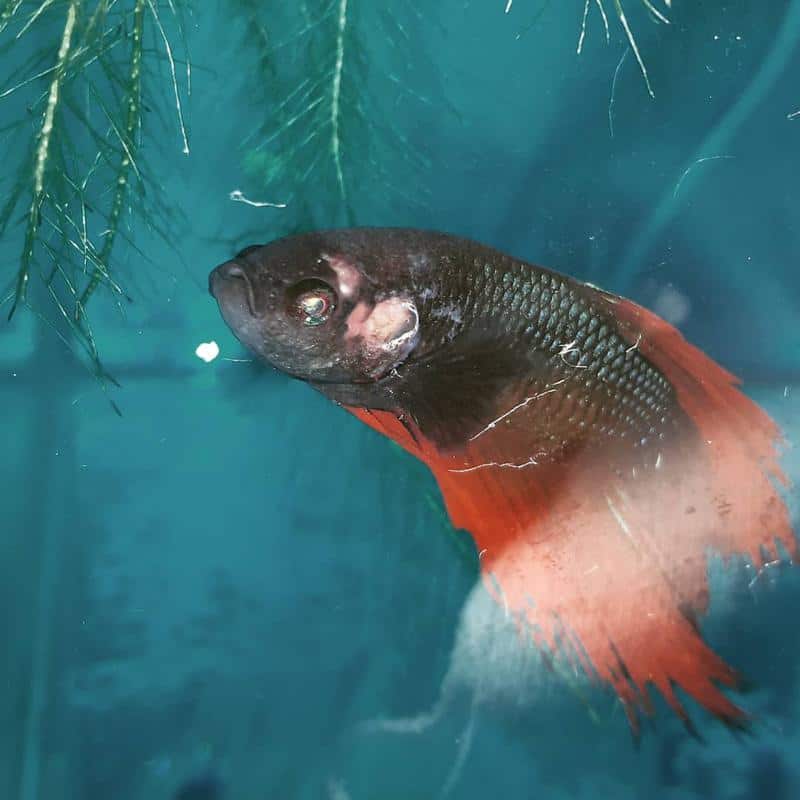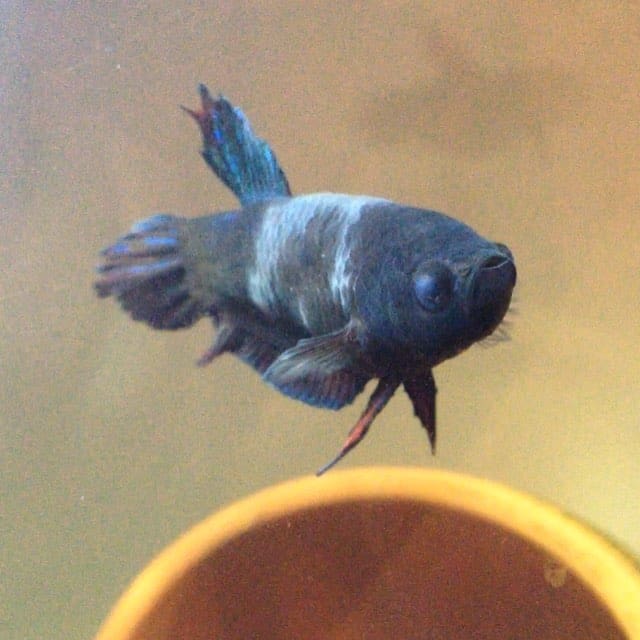The cotton wool disease is an extremely harmful bacteria infection that can be very unforgiving. In the later stages of the disease, the damage to the fish’s gills can become so severe that vets recommend euthanasia as a last resort to help the fish.
Despite its severe afflictions, the disease does not affect healthy aquarium fish. It only takes hold in animals with weakened immune systems.

In high-quality waters with healthy fish, the responsible bacteria live freely and safely with the fish; it is only when the fish get sick or become stressed that the bacteria are able to enter the fish’s system and take hold.
With that said, many preventive measures can be taken to ensure your fish are not susceptible to the disease.
If your fish are afflicted, you can rest assured that the sooner you detect the disease, the easier it is to cure with common antibiotics. Read on to learn how to defeat the cotton wool disease.
What is the Cotton Wool Disease? Causes & Prognosis
| Common Names | Cotton wool disease, common mouth disease, saddleback, black patch necrosis, columnaris disease, cotton fin fungus |
| Causes | Columnaris bacteria – Flavobacterium columnare.
Formerly referred to as Flexibacter columnaris, Bacillus columnaris, Cytophaga columnaris, Chondrococcus columnaris |
| Symptoms | Pale patches on skin, gills, and mouth, lethargy, lack of appetite, twitching, rubbing body against surfaces, pale gills, and trouble swimming |
| Treatment | Quarantine, Water Change, & Antibiotics |
The cotton wool disease (also known as Columnaris) is an opportunistic bacterial infection that affects aquarium fish with already weakened immune systems from sickness or stress. Essentially, the cotton wool disease/cotton mouth disease is a secondary problem that requires a two-part treatment.
The disease is caused by a bacterium called Flavobacterium columnare (also columnaris bacteria), and the most telling symptom is the appearance of thick fluffy white cotton-wool-like patches on the fish’s skin, mouth, fins, or gills.
However, it is important to note that the cotton wool disease is often mistaken for a fungi disease due to the pale cotton-like skin patches. It is because of this that some refer to the disease as the cotton fin fungus.
In fact, many hobbyists and experts in the business use the term ‘cotton wool disease’ to refer to a wide range of fungal or bacterial infections that cause cotton wool-like patches on fishes’ mouths, fins, and skin.
It is hard to physically differentiate bacterial from fungal infections, especially when the disease has progressed.
At the beginning (less than 48 hours), the bacterial infections appear as slimy patches of mucus that then grow into cotton-wool-like patches. For fungal infections, the cotton-wool-like patches appear from the very beginning.
As the two diseases progress, it becomes harder to tell them apart. The full-proof way to differentiate bacterial infection from fungal infections is through a microscopic biopsy exam. The Columnaris disease will show bacteria that form into small haystacks, while the fungal infections appear as stringy hyphae.
What Causes Cotton Mouth in Fish? Causes & Prognosis
The Flavobacterium columnare is a freshwater bacterium that affects cultured and wild freshwater fish. In fact, the cotton wool disease is the second leading cause of death in commercial catfish in the United States – with a mortality rate of about 60-90 percent in ponds.
It is a highly diverse species that is a common but not well-understood pathogen. The biology and mechanism of the Flavobacterium columnare species are still under study, with only three well-documented genomovars.
What we know is that stronger types of bacteria can cause harm, but the most common ones are harmless unless the fish is stressed or sick. Also, the bacteria strive under warmer waters of about 80+ degrees Fahrenheit.
It starts off with a weak immune system caused by several stressors and infections. Examples of this include a poor diet, poor water quality, problems in transporting the fish safely, and other bacteria;/fungal infections.
Once the fish’s immune system is compromised, the bacteria starts to spread.
The prognosis timeline is very predictable for this bacterial infection. It takes between 24 and 48 hours for the cotton-wool-like patches (ulcerations) to develop. At this stage, the disease is non-fatal, and the spread can be easily mitigated by isolation & quarantine.
This is the stage where the white slimy, mucus-like structures start appearing on the skin, mouth, and even gills before turning into white patches. The whitish color of the cotton-like patches may turn into a brown-like substance and, in some cases, yellowish with red-tinged edges.
The cotton wool disease becomes fatal when the 72-hour mark nears. If not, treatment is administered before then; you can expect some of the fish (especially younger ones) to start dying. This period can be cut short if the fish’s environment is at higher temperatures, between 85 – 90 degrees Fahrenheit.
Permanent gill damage, redness to the affected areas, and twitching are some of the visible signs of a progressively fatal cotton wool disease.
Once about 50% of gill tissues are affected, you will be forced to euthanize the fish since it won’t be possible to cure them. It is not easy for any type of fish to fully recover from such extensive damage. Air stones may help provide more oxygen to the severely affected gills, but this is more of a temporary solution than a cure.
Cotton Wool Disease Symptoms

Recognizing the symptoms of cotton wool disease is crucial for early detection and treatment.
1. Pale patches on the Skin and Mouth
These are the first signs.
The pale, whitish, or greyish patches are often formed on the skin around the head as well as the mouth region.
They can also be seen as ulcerations or lesions around the affected areas. Their shape and color take form as the disease progresses. To currently identify the disease, pay more attention to its progression and the most afflicted areas; mouth, gills, and head region.
2. Light or Dark Brown Gills
White patches on the gills are also accompanied by mucus on the gills as well as the dorsal region.
The gill will become damaged, which will cause the fish to have difficulties breathing. The fish will breathe rapidly, and this can be a clear sign of cotton mouth disease to the experienced eye.
3. Lethargy
Sluggishness and weakness in the fish’s movements indicate that the problem has spread throughout the fish’s body.
4. Trouble swimming
Swimming difficulties are a clear indication of the loss of equilibrium. This is from the extensive damage done to the various body parts, including gills but also due to body weakness, lethargy, and stress.
5. Death
High mortality rates, particularly among young fish (without a well-developed immune system), are a good indicator of columnaris disease. More mature fish will take longer to die, but as the disease progresses, the mortality rate can shoot up to 90%, even in stronger fish.
How is the Cotton Wool Disease Diagnosed?
Proper diagnosis is essential to differentiate cotton wool disease from other fish ailments and to initiate the appropriate treatment. To diagnose columnaris disease, a trained fish veterinarian or experienced aquarist may perform the following:
- Visual Examination of the Symptoms
- Microscopic Analysis of scrapings from the affected areas
- Bacterial Culture to confirm the presence of the specific bacterium strain responsible for columnaris disease.
Bacteria material can be found in many parts of the fish, including the skin, gills, and kidneys. A vet will perform a swab and then a biopsy to identify the bacteria (make sure it is not a fungus) and know which strain it is
Further analysis would also mean that the material is then cultured on reduced nutrient agar. Antibiotics are added, and the temperature is kept at about 98 degrees Fahrenheit to improve the culture’s performance.
The growth will fully take place in under 24 hours, after which the vet will have a complete diagnosis of the cotton wool disease.
As stated, the bacterial columnaris disease is differentiated from fungal infections by the presence of small haystacks of bacteria instead of stringy fungal hyphae.
Cotton Wool Disease Treatment and Remedies

Since the disease is a secondary problem caused by a weakened immune system, treatment requires a two-part process where you address the disease and also rectify the causes behind the weakened immune system.
1. Isolation and Quarantine
Start by identifying the cause of a weakened immune system. You will first have to isolate the fish and quarantine them in a separate tank to stop the spread of the disease to healthy fish.
2. Water Change
Proceed to perform a 20 – 30 percent water change and siphon the fish tank’s gravel to make it hygienic and more livable.
3. Antibiotics
Use antibiotics for the specific strain to avoid destroying the biological filtration, thereby causing the bacteria to breed much more resistant strains.
Injectable or soluble antibiotics (fish bath) should be used – only the ones recommended by the vet. Commonly used columnaris disease antibiotics include Furan 2 and Melafix
How Do You Prevent Cotton Wool Disease In Fish?
1. Maintain High Water Quality
Maintaining a clean and healthy fish tank with the right water parameters will ensure your fish never have to suffer from cotton wool disease. It is a full-proof preventative measure.
Poor water quality ensures that the bacteria will easily multiply, thereby contaminating the tank. Organic waste from the fish as well as leftovers, are the main contributors to poor water quality since they increase ammonia build-up and lead to ammonia poisoning (a common stressor in fish tanks).
Water changes are part of the routine maintenance procedures you should adhere to to ensure the tank remains healthy and clean. You should also cycle the water on a regular basis to ensure the healthy bacteria are maintained while the waste is filtered out.
In terms of preventing infections, it is recommended you perform about 10-15 percent water changes every two weeks for smaller tanks and about 20 percent every two weeks for larger tanks. Please keep in mind that you can alter these percentages depending on the state of your specific setup.
In terms of outbreaks and disease, you can decide to do a 30% water change to easily rectify the situation. However, do this slowly to not avoid changing the water chemistry too much since it will further stress your fish.
Also, clean the gravel at the bottom of the tank.
2. Vaccines
Vaccines are also available to help deal with an outbreak or to act as a preventative measure. Some are readily available, while other vaccines are experimental and in the trial phases.
Talk to your vet to get more information on what columnaris vaccines they have in store and if your particular problem can be solved with one.
3. Reduce stress
Stress from an unhealthy environment, bullying, injury, or sickness can further reduce the immunity of your aquarium fish. Ensure you keep an eye on the overall stress levels of your fish to ensure they are not susceptible to bacterial infection.
Signs of stress in fish include; abnormal swimming patterns, excessive hiding, visible signs of bullying, reduced appetite, and gasping at the surfaces.
Read More:
Conclusion
By maintaining optimal water quality, reducing stress, and implementing appropriate preventive measures, fish enthusiasts can minimize the fatal effects of the harmful columnaris disease.
Early detection and prompt treatment are crucial for successfully combating cotton wool disease and ensuring the well-being of your aquarium fish.